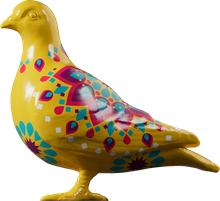Social History — C. 1750-1780
Casket, trunk
This leather covered wooden casket contains over 100 documents, referring to Anglo-Indian financial and mercantile interaction in the late 18th century. Written mainly in South Asian Farsi (Persian), employing the adapted Arabic script, the official and private papers in 5 rolls with additional papers, record often detailed accounts of the internal transactions of the Arakat (Arcot) State and its dealings with the British East India Company. It is likely the papers was returned to the UK on an East Indiaman by a Company writer stationed in East India in the 1780s.
The 5 rolls of papers comprise: a roll of c.28 letters in Persian by an East India Company writer deployed with forces near Ellore to a correspondent in Canvery c.1785-8. A roll of 34 documents in Persian, mainly instructions issued by the Nawab of Arakat (Arcot), c.1756-1780; a roll of documents in Persian on 16 sheets, mainly information petitions regarding inheritances and grants in the Arakat (Arcot) territory; 28 arzdashts (petitions) mainly accompanying revenue collections or offerings, probably addressed to the Nawab of Arcot; a roll of 47 documents in Persian, mainly letters by a Hindu financial official of the Nawab of Arakat (Arcot), some dated 1767-1780. The miscellaneous documents in the casket include: elementary notes on the grammar of Deccani Hindustani, Carnatic, c.1780 with a word list including English translations, and 12 letters in Persian, some addressed to a British man (Mr Sahib), probably from the Carnatic, c.1780. Also included, is a rolled insurance policy for 4000 rupees for a voyage of the ship Welcome to Bombay in the 1750s. This is written in the commercial script usually called Mahajani. This was a business shorthand widely used by the bankers and merchants of northern India and the policy was probably by a Marwari banker.
The papers reveal how the East India Company's sphere of influence extended from London through to the Indian subcontinent with allies such as Mohamed Ali Khan Walajan (1717-1795), the Nawab of Arakat (Arcot), who controlled important strategic trade routes in Southern India. Arcot, the capital of Carnatic is also associated with Clive of India who captured it in 1751. For East India Company officials or ‘writers’, knowledge of local languages was crucial. Amongst the papers are found translation exercises where Farsi and South Indian Urdu phrases and words have been transcribed into English. Other documents include rolls of letters, grants, instructions and petitions in Farsi, most of which relate to the Nawab of Arcot, Mohamed Ali Khan Walajan (1717-1795), and his territories.
- Category:
- Social History
- Object ID:
- 2008.94/1
- Object name:
- casket, trunk
- Artist/Maker:
- —
- Related people:
- Related events:
- Related places:
- Production date:
- c. 1750-1780
- Material:
leather, wood, calico, metal
- Measurements/duration:
- H 288 mm, W 305 mm, D 230 mm (open as displayed), W 272 mm, D 192 mm (shut), H 310 mm (lid open)
- Part of:
- —
- On display:
- —
- Record quality:
- 100%
- Part of this object:
- —
- Owner Status & Credit:
Permanent collection
- Copyright holder:
digital image © London Museum
- Image credit:
- —
- Creative commons usage:
- —
- License this image:
To license this image for commercial use, please contact the London Museum Picture Library.

